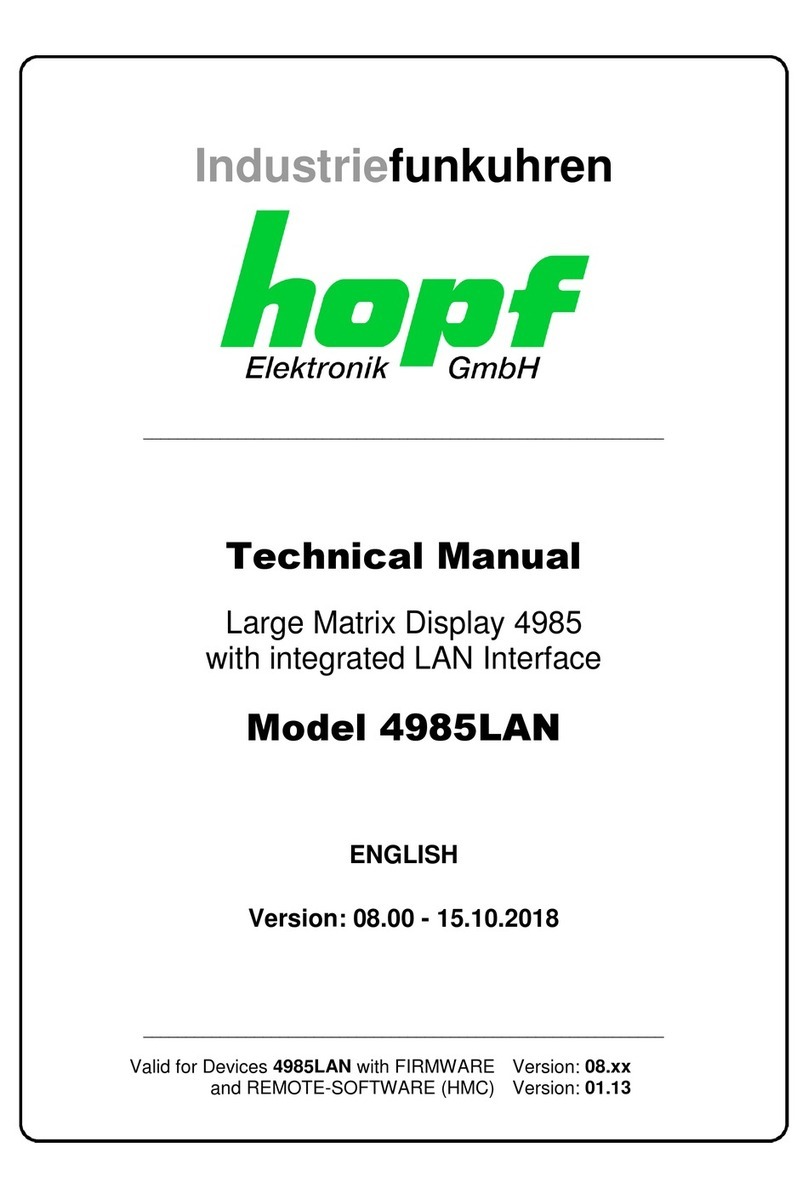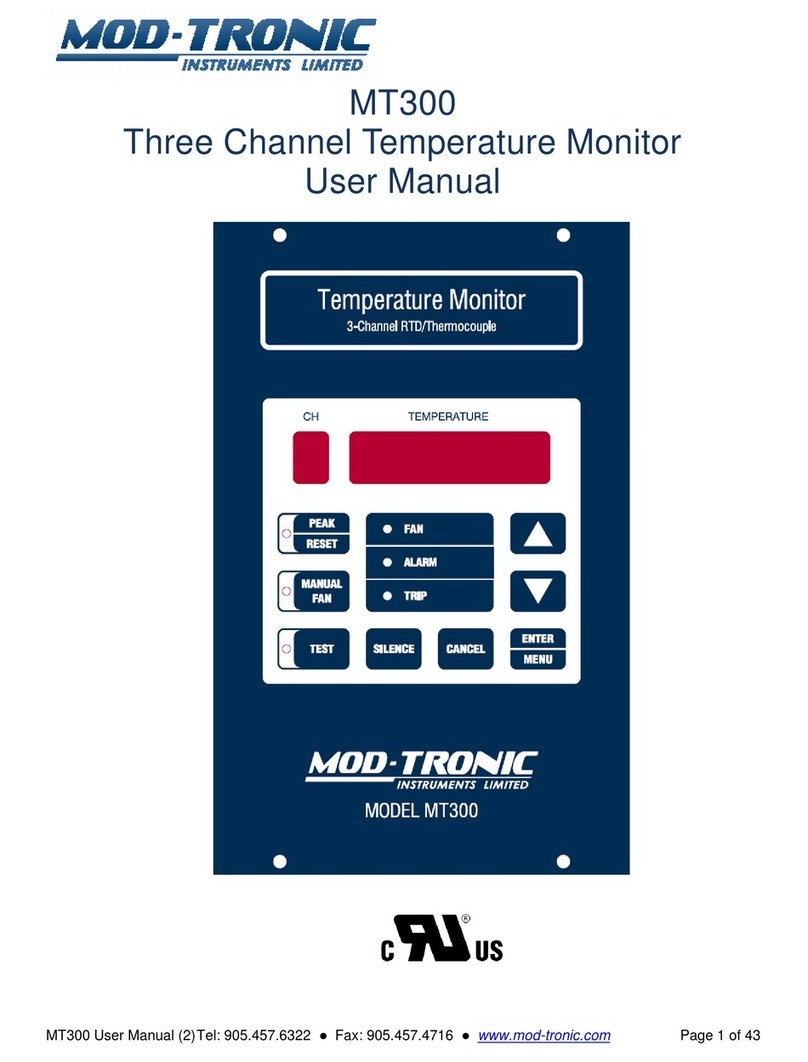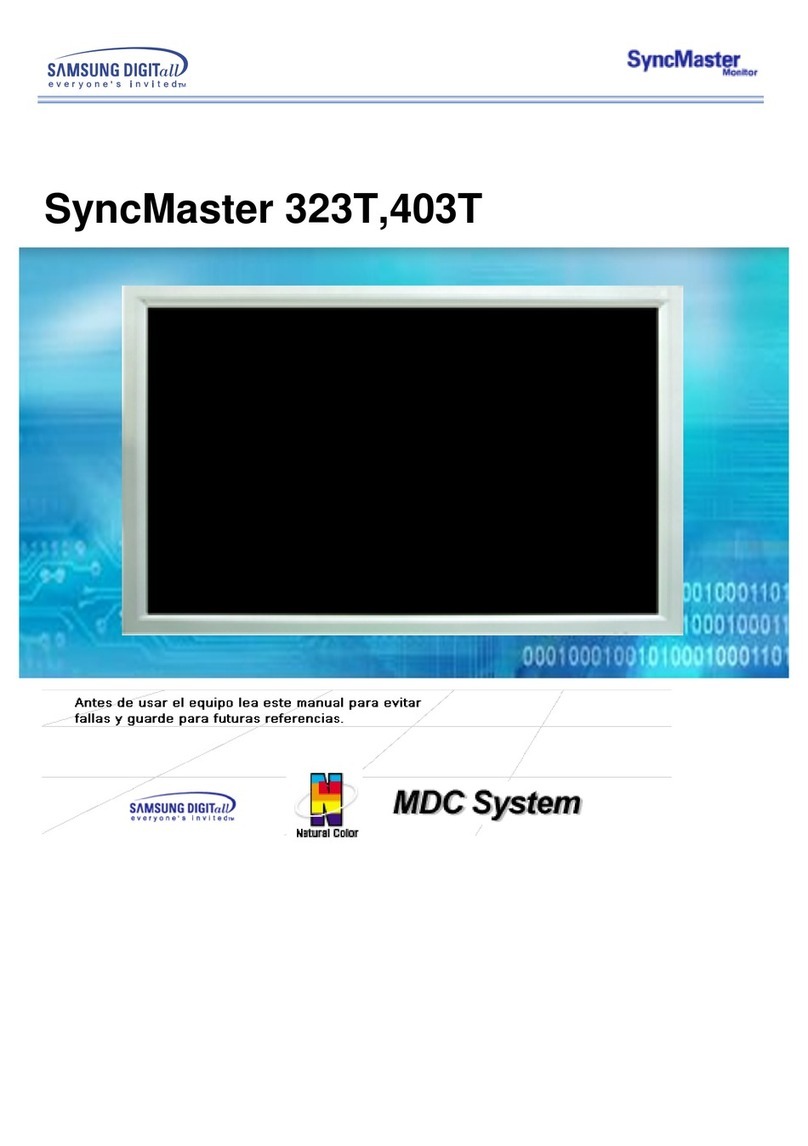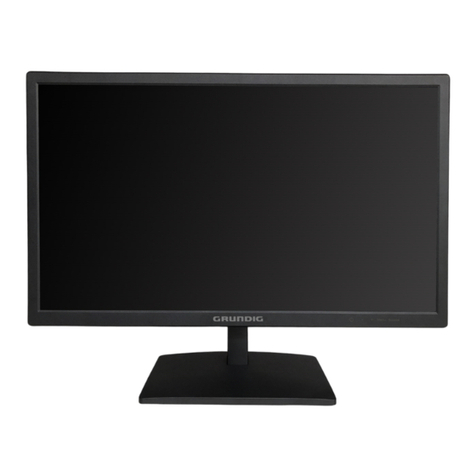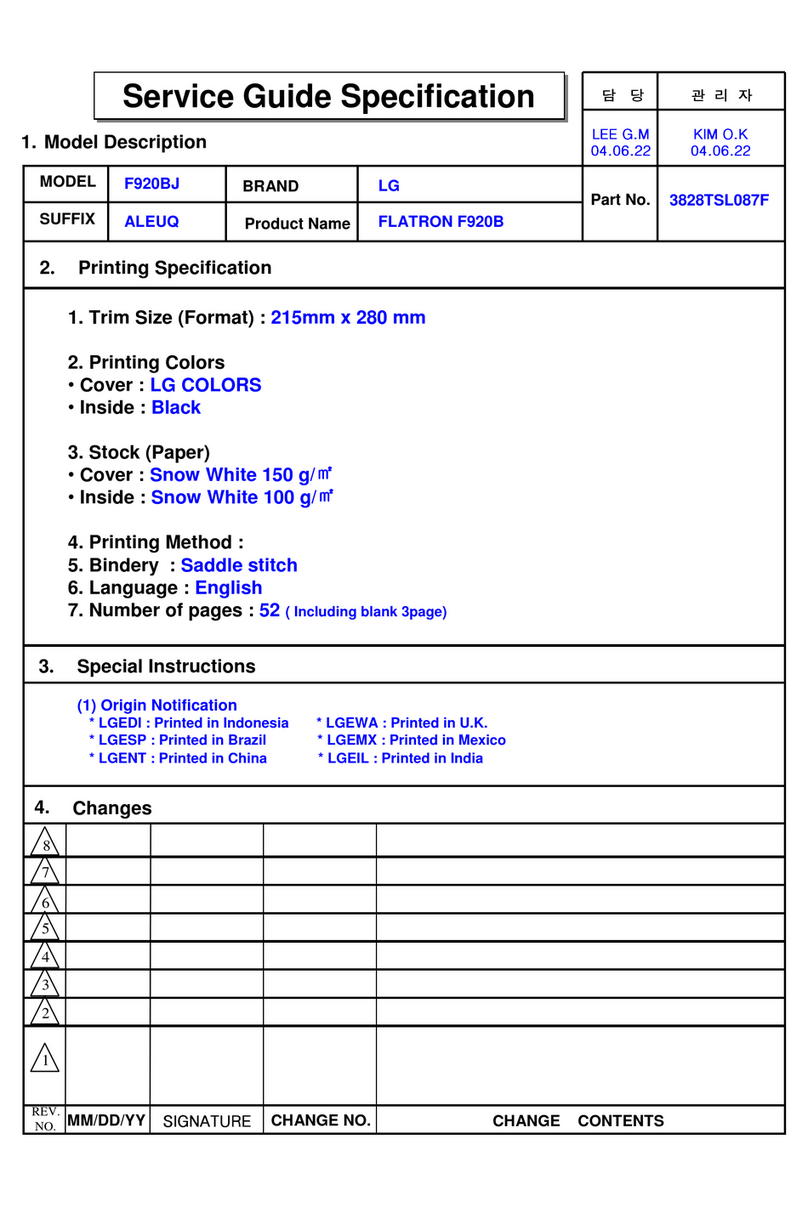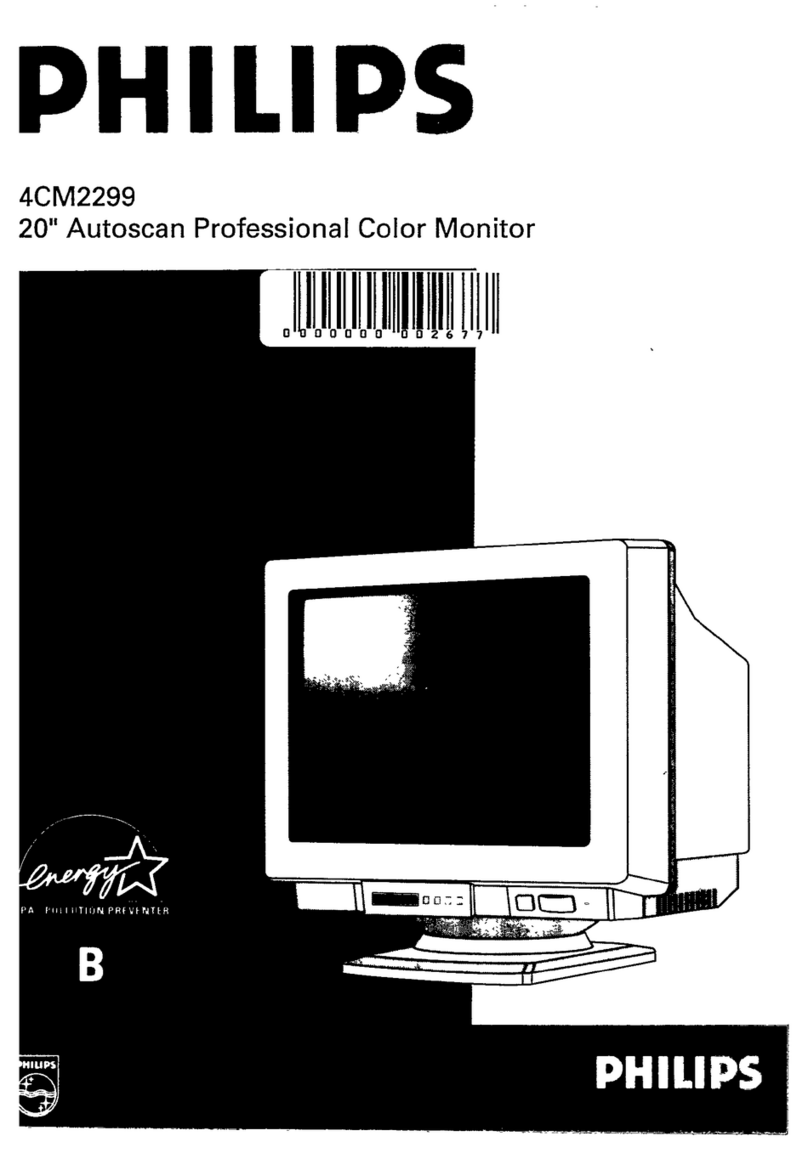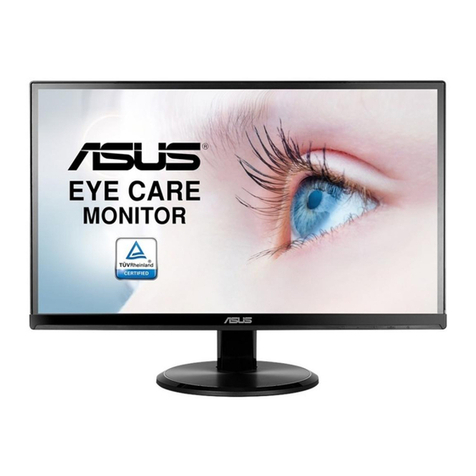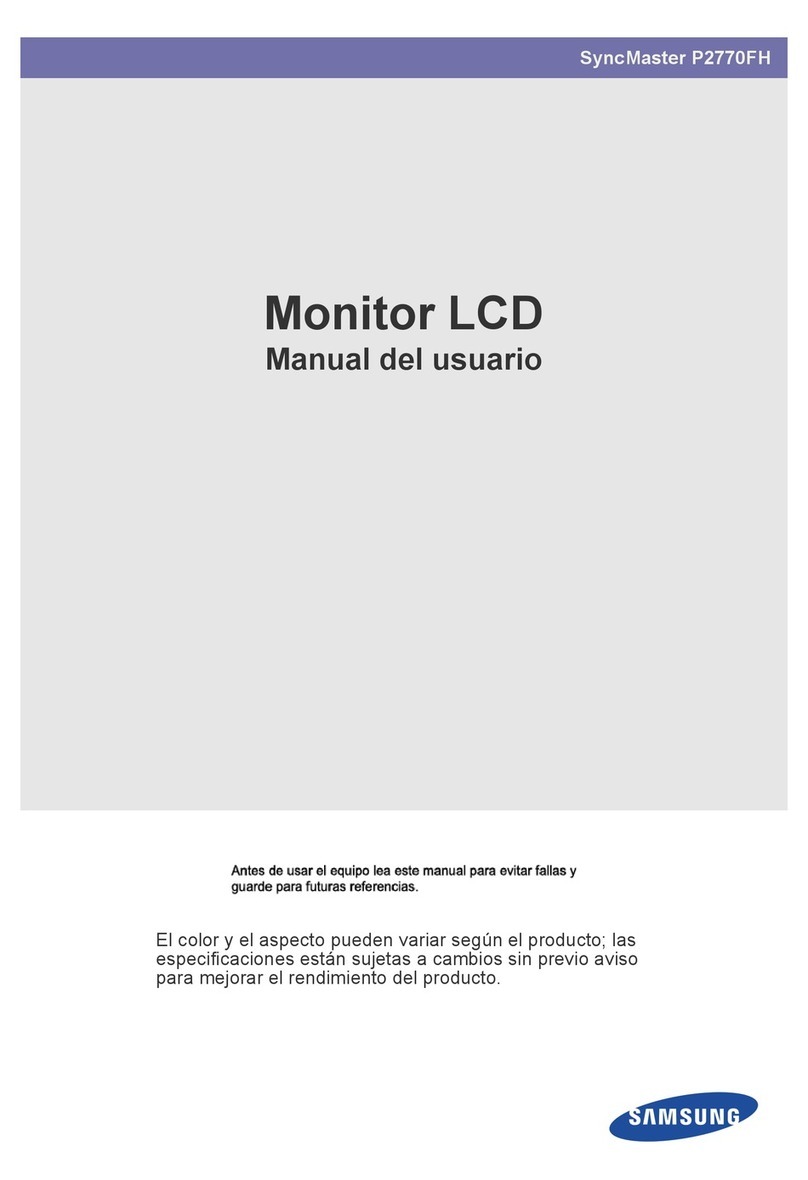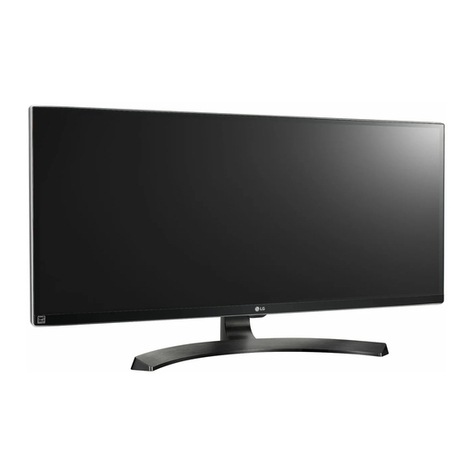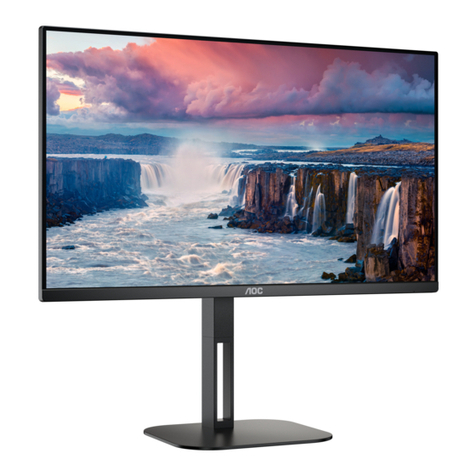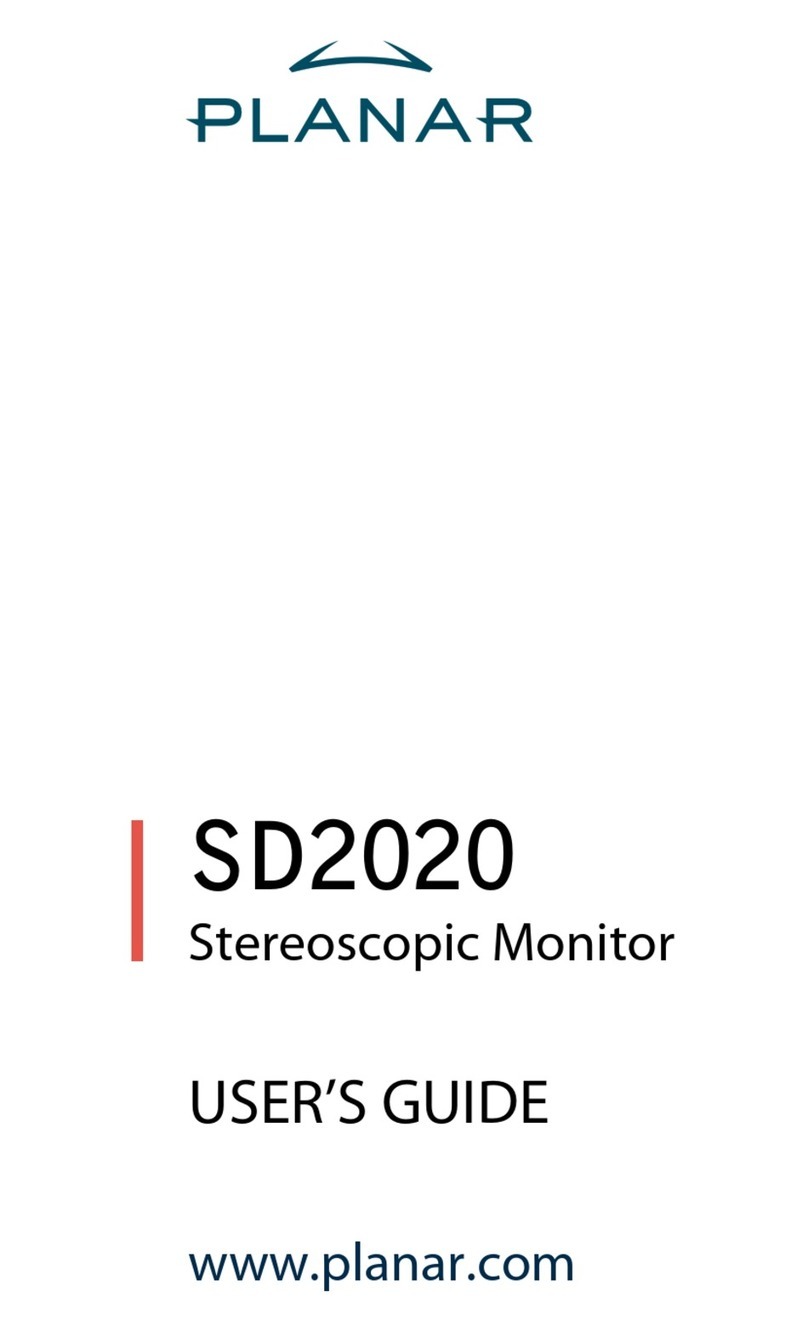Network Technologies Incorporated ENVIROMUX-DCLM-6 User manual

1
INSTALLATION GUIDE FOR THE
ENVIROMUX-DCLM-6
DC Voltage and Current Monitor
INTRODUCTION
The NTI ENVIROMUX-DCLM-6 DC Voltage and Current Monitor monitors up to six DC voltage sources and current levels when
connected to an ENVIROMUX-16D, ENVIROMUX-5D or ENVIROMUX-2D Server Environment Monitoring System(SYSTEM).
The ENVIROMUX-DCLM-6 will measure DC voltage between -60 to +60VDC. Current measurements can be taken on DC loads
and with the use of hall effect sensors (sold separately). When connected to a SYSTEM via 18-24AWG CAT5/5e/6 cable (up to
1,000 feet away), the voltage and/or current draw(s) can be monitored and the SYSTEM can be configured to alert users as to
variations in the voltage and current levels.
Features:
Detects and monitors up to six DC voltages (-60 to +60VDC)
Monitors up to 6 DC Current measurements using hall-effect
transducers (sold separately)
No Current measurement limit (hall-effect transducer dependent)
2 and 4-position screw-terminal connections
Supports 18-24AWG CAT5/5e/6 cable up to 1,000 ft. (305M) (not included)
Includes Mounting Ears
CE certified and RoHS compliant
Powered by ENVIROMUX-2D/5D/16D (requires firmware version 2.37 or later)
oAbsolute maximum input voltage range for external power source (if needed)- 10.8VDC to 16.5VDC
oOptional 12VDC power supply sold separately
Dimensions WxDxH (in): 6.8x3.0x1.75
Accuracy and range are transducer-dependent (sold separately).
Compatible with ENVIROMUX-FSC Fiber Converter/Extender
oUse to extend sensor up to 1.2 miles (2km) from the ENVIROMUX unit.
INSTALLATION
Mount the ENVIROMUX-DCLM-6 using the mounting ears provided. To use the ears, remove the screws securing the ears to
the rear of the ENVIROMUX-DCLM-6, turn the ears around, and reapply the screws.
Note: The ENVIROMU
X
-
xD
must be
running firmware version 2.37 or later
in order to use the
ENVIROMUX-DCLM-6 with it. Refer
to the ENVIROMUX-xD manual for
firmware upgrade instructions as
needed.

2
To mount multiple ENVIROMUX-DCLM-6 in close proximity to the ENVIROMUX-16D, install an extension rail kit (NTI
ENVIROMUX-RL-16D - sold separately) and mount ENVIROMUX-DCLM-6 as seen in the illustration below.
POWER CONNECTION- Using Connected CATx cable
The ENVIROMUX-DCLM-6 may require more power (at 12VDC) than can be supplied by the RJ45 Sensor ports on the
ENVIROMUX-16D/5D/2D.
The ENVIROMUX-DCLM-6 alone (without hall effect sensors connected) draws 34mA. Each hall effect sensor can require as
much as 26mA. The ENVIROMUX-DCLM-6 may draw up to 190mA of current when 6 hall effect sensors are connected.
Each complete row of RJ45 sensors on the ENVIROMUX-16D will support up to 500mA of current load.
The row of five RJ45 sensors on the ENVIROMUX-5D will support up to 500mA of current load.
The two RJ45 sensors on the ENVIROMUX-2D will support up to 200mA of current load.
When your combination of attached sensors that operate at 12VDC restricts the amount of power that is available for the
ENVIROMUX-DCLM-6, the 12VDC Power Jack will need to be used. (Many sensors operate at 5VDC and do not need to be
considered in this calculation.)
Note: If your CATx cable is longer than 50 feet, you must use the 12VDC Power Jack to power the ENVIROMUX-DCLM-6.
POWER CONNECTION- Using 12VDC Power Jack
A 12VDC power jack and 7 foot power pigtail cable is supplied to enable easy connection of the ENVIROMUX-DCLM-6 to the
AUX PWR connection terminals on your system (ENVIROMUX-2D, -5D and -16D as directed on the next page). If these
terminals are already in use and sufficient remaining power capacity is not available from them (that is, they are in use to power
other sensors), a 12VDC AC adapter can be purchased-sold separately (NTI # PS4235 + Country-specific power cord-).
The “AUX PWR” terminals for the ENVIROMUX-2D and ENVIROMUX-5D are rated to support up to 500mA, so connection of an
ENVIROMUX-DCLM-6 with all 6 hall effect sensors can be supported without external power supply.
Note: The “AUX PWR” terminals on the ENVIROMUX-16D can only be used to power the
ENVIROMUX-DCLM-6 when a maximum of 4 hall effect sensors are used (150mA max.).
If the DC power jack is being used to power the ENVIROMUX-DCLM-6, then all current demand is placed on the
pigtail or power supply providing that power. Power requirements are provided by EITHER the CATx cable
connecting the ENVIROMUX-DCLM-6 to the ENVIROMUX System, OR by the DC power cord plugged into the jack.
Power requirements are not shared by the two connection methods.

3

4
MONITORING CONNECTIONS
Note: To prevent damage to the voltage source or the Sensor Adapter proper polarity must be observed when making
connections.
1. At the “DC VOLTAGE” terminal block, connect a -60 to +60VDC voltage source to be monitored to the “Vin“ and “ “ (earth
ground)connections using the removable terminal block.
2. If current sensing is desired, install a hall effect sensor to the DC circuit to be monitored. Then connect the supplied
4-wire cable to the sensor. Connect the 4 wires at the end of the cable to a set of DC CURRENT TRANSDUCER terminals
on the ENVIROMUX-DCLM-6.
Note: The wire connection terminal block is easily removed from the Sensor Adapter for convenient wire termination.
TIP: A single hall effect sensor can be used to measure current at different ranges. By passing a wire through the
sensor loop repeatedly (looping the wire around), the range of the sensor will be divided by the number of times the wire
passes through. For a 100A sensor, for example, two passes will reduce it by 100/2 (range of 0-50A), three passes will
reduce it by 100/3 (range of 0-33A), and so on. See example below. If you need to increase the sensitivity of your
sensor, this is a way to do so.

5
Installation Note: Hall Effect sensors can be rated AC Current-only, DC Current-only, or AC/DC current compatible. Sensors
rated for DC current will include a directional current flow arrow either on the label or on the body of the sensor, indicating that
current flowing in that direction will be reported by the sensor as positive current flow. When installing a hall effect sensor to a DC
circuit, you will want to install it oriented such that the arrow points in the direction you want represented as positive current flow
on the status page for that sensor.
Hall Effect Sensors Available
MODEL RATING LOOP DIAMETER
ENVIROMUX-AMP10-6-5 10A 0.26" (6.5mm)
ENVIROMUX-AMP20-6-5 20A 0.26" (6.5mm)
ENVIROMUX-AMP50-6-5 50A 0.26" (6.5mm)
ENVIROMUX-AMP50-SC12 50A 0.47” (12MM)
ENVIROMUX-AMP100-SC12 100A 0.47” (12MM)
ENVIROMUX-AMP200-SC12 200A 0.47” (12MM)
ENVIROMUX-AMP300-SC12 300A 0.47” (12MM)
ENVIROMUX-AMP400-SC12 400A 0.47” (12MM)
ENVIROMUX-AMP30-SC12 30A 0.83” (21MM)
ENVIROMUX-AMP50-SC12 50A 0.83” (21MM)
ENVIROMUX-AMP100-SC12 100A 0.83” (21MM)
ENVIROMUX-AMP200-SC12 200A 0.83” (21MM)
ENVIROMUX-AMP500-SC12 500A 0.83” (21MM)
For pricing, go to http://www.networktechinc.com/hall-effect-sensors.html. For more sensor size options, contact NTI
at 330-562-7070.
Positive current flow
indicator

6
3. Connect a 18-24AWG CAT5/5e/6 patch cable (up to 1,000 feet long) between the “Cat x” port on the ENVIROMUX-DCLM-6
and an “RJ45 Sensor” port on the SYSTEM. (The use of smaller gauge CATx cabling will result in shorter distances that can be
spanned.)
Note: If a CATx cable longer than 50 feet is used to connect the ENVIROMUX-DCLM-6 to the ENVIROMUX-2D/5D/16D,
then 12VDC jack will need to be used to power the ENVIROMUX-DCLM-6.
4. Configure the SYSTEM to react to changes in the voltage and/or current from the source(s), as desired. See examples on
the following pages.

7
CONFIGURATION
When an ENVIROMUX-DCLM-6 is connected to the ENVIROMUX, the summary page (above) will update with 6 sets of 2
different sensor types, DC Voltage and DC Current. The sensor is plugged into RJ45 Sensor port #5 in this example. Numbers
“1a”, “2a”, “3a” and so on correspond to numbers 1-6 on the ENVIROMUX-DCLM-6 for connected DC Voltage sources.
numbers “1b”, “2b”, “3b” and so on correspond to numbers 1-6 on the ENVIROMUX-DCLM-6 for connected hall effect sensors.
Click on the Sensor in the Description column (or “View” under Action) and display the status page for each sensor. (Below). In
order to better define the sensor on the Summary Page, in SNMP traps, or in an MIB browser, click on the “Edit” link to open the
sensor configuration page and configure the sensor.
Click on the “Configure” button on any Status Page to display the Configuration page for any sensor.

8
The default Unit and Range are “%” and “100”
because at these values, ANY hall-effect sensor
that is connected will be reported accurately on
the summary page, regardless of its actual range.
If the Range value is changed to anything except
“100”, the Unit must be also changed to “A” or
“Amps” in order for the displayed value to be
accurate. (The Nominal Range value must always
be a
p
ositive number.
)
The numerical values
of the thresholds
(positive or negative)
must always be equal
to or less than the
value of the Nominal
Range.
We show the minimum
threshold values here as
negative because with
DC current sensing, the
reported values can be
negative. (This is not
true of AC current
sensing.)

9
Most of the sensor settings are the same as any other sensor configuration (page 39 of the ENVIROMUX-xD manual) but for the
DC Current Sensors there are some differences:
Sensor Settings Description
Sensor Unit The default Sensor Unit is “%”. When a sensor value report that is a percent of its full scale is
desired, use this unit. The value of all hall effect sensors will be reported accurately with this
setting, regardless of their nominal range.
Note: If the Nominal Range (below) is changed from the default “100”, the Sensor Unit
must be changed to “A” or “Amps” to properly represent the value reported on the
sensor Status and Summary pages.
Nominal Range The default Nominal Range value is “100”. When combined with the default Sensor Unit of
“%”, this value will allow the ENVIROMUX to report accurately any hall effect sensor that is
connected, regardless of its range.
However, if you wish to have the value on the sensor Status or Summary page reported in an
accurate range of amperage, change this value to the maximum capacity of the connected hall
effect sensor and be sure to change the Sensor Unit value (above) to “Amps”.
TECHNICAL SPECIFICATIONS
Description Specification
Polling rate 1Sa/s
DC Voltage Range Non-isolated -60 to +60V DC
DC Reporting Accuracy 1.2VDC
DC Resolution 0.12VDC
Current Measurement Requires Hall-Effect transducer (sold
separately)
Power 12VDC from AUX PWR or AC Adapter or
CATx cable from ENVIROMUX Sensor port
Voltage Range Absolute maximum 10.8VDC to 16.5VDC
Current Draw 34mA (without load) +26mA per Hall Effect
Sensor Connected (190mA Maximum)
Size (In.) W x D x H 6.83 x 3.0 x 1.75
Regulatory Approvals CE, RoHS
COPYRIGHT
Copyright © 2009-2017 Network Technologies Inc All rights reserved. No part of this publication may be reproduced, stored in a
retrieval system, or transmitted in any form or by any means, electronic, mechanical, photocopying, recording, or otherwise,
without the prior written consent of Network Technologies Inc, 1275 Danner Drive , Aurora, OH 44202.
CHANGES
The material in this guide is for information only and is subject to change without notice. Network Technologies Inc reserves the
right to make changes in the product design without reservation and without notification to its users.
WARRANTY INFORMATION
The warranty period on this product (parts and labor) is two (2) years from date of purchase. Please contact Network
Technologies Inc at (800) 742-8324 or 330-562-7070 for information regarding repairs and/or returns. A return authorization
number is required for all repairs/returns.
MAN257 Revised 6/22/2017
This manual suits for next models
1
Table of contents
Other Network Technologies Incorporated Monitor manuals


